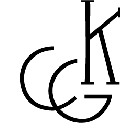
Slide Show
Gallery
Contact Us
3 Special
Buying
Opportunities!
Artists
Albert Alcalay
Wendy Artin
DerHohannesian
Distant Lens
Ruth Eckstein
Rubin Gold
Dinora Justice
Ivan Massar
Anne Mastrangelo
Helen Meyrowitz
Elliot Offner
Jonathan Palmer
Miklos Pogany
Arthur Polonsky
Eleanor Rubin
Sloat Shaw
!
|
|
Albert Alcalay
(Continued Here) |

|
Santorini |
ALBERT
ALCALAY, an international artist who settled in Boston after WWII, a
survivor of the Holocaust who has looked at each day since with clarity,
joy, and an optimism born of an innate love of life…ALBERT ALCALAY,
whose vision of life may be a landscape or seascape, the bustle of a
city or the tranquility of countryside, all described in glorious color,
or through the energetic and pulsing line of pen and ink…ALBERT ALCALAY,
whose abstractions of the city, a pond, a biblical theme, a time of day
may take us beyond the real object to a realm of emotion and feeling, to
fanciful, almost humorous exuberance through a pure play of color and
line ... |

|
Houses on the Mountain |
Albert
Alcalay was born in 1917, in Paris France. His family moved to Belgrade,
Yugoslavia, in 1920, and at the age of twelve, Alcalay became an
apprentice to the painter Bora Baruh. Enrolled in a private school of
painting in Belgrade in 1929, he also graduated from gymnasium, the
European high school. In 1937, he entered the School of Architecture at
the University in Belgrade, with the intention of becoming an architect.
In that year, he also traveled to Paris, where he studied Impressionism,
Post-Impressionism, Fauvism and Cubism, artistic influences that have
continued to flow throughout his career. |

|
Il Camion (The Truck) |
During WWII,
Alcalay fought with the resistance, was captured by the Nazis, escaped,
and found his way to fascist Italy where he lived in Padua. He entered
prison in Vicenza to hide from the Gestapo, and was able in 1942 to
rejoin his family, interred in Ferramonti concentration camp in southern
Italy. It was in this camp that he met an important German Expressionist
painter, Michael Fingesten, who deeply impressed the young Alcalay. As a
result of this friendship, Alcalay determined to become an artist. From
1943 to 1945, when he was liberated by Allied troops, Alcalay lived in
‘free confinement’ as a foreign refugee in Pergola, a small medieval
town in central Italy. There he began drawing and painting the rural
landscape. Escape was necessary again, though, when the Gestapo sought
him out, and with his family, he fled into the Italian mountains, where
Italian peasants and clergy sheltered them and kept them alive.
(Continued Here) |
|



